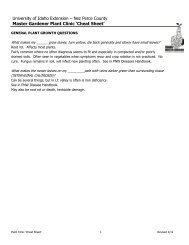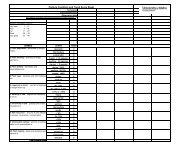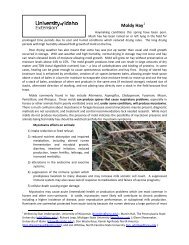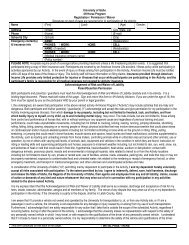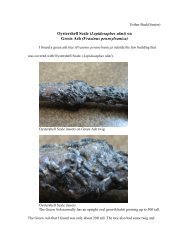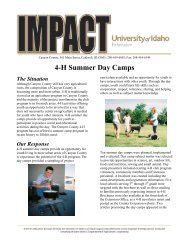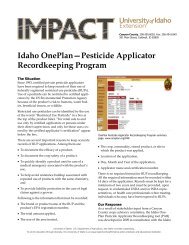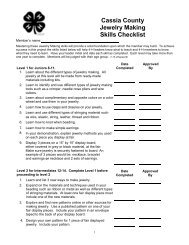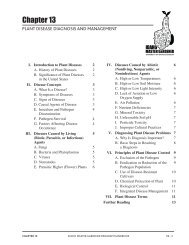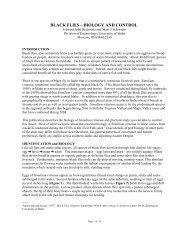Training and Pruning Your Home Orchard, PNW 400 (Oregon State ...
Training and Pruning Your Home Orchard, PNW 400 (Oregon State ...
Training and Pruning Your Home Orchard, PNW 400 (Oregon State ...
Create successful ePaper yourself
Turn your PDF publications into a flip-book with our unique Google optimized e-Paper software.
As these buds grow—<strong>and</strong> before<br />
they’ve produced enough wood to<br />
become stiff—fasten the shoots that<br />
grow from them to training wires or<br />
sticks with masking tape or other suitable<br />
material.<br />
Develop the lowest branches first,<br />
angling them at about 30 degrees at<br />
the start. Widen this to 45–50 degrees<br />
when they’re as long as you want them<br />
(Figures 12 <strong>and</strong> 13).<br />
By heading the central leader just<br />
above where you want branches,<br />
develop one or two higher pairs of<br />
branches, keeping them shorter <strong>and</strong><br />
slightly more spreading than the lower<br />
pair. It’s best to have at least 18 inches<br />
vertically between branches.<br />
Balance the growth of limbs by<br />
bending strong limbs down more or<br />
weak limbs up more. Withhold or<br />
apply fertilizer to keep growth within<br />
desired bounds.<br />
Tools<br />
Long‐h<strong>and</strong>led pruning shears (Figure<br />
14, center) are the most useful tool<br />
for almost all pruning jobs.<br />
H<strong>and</strong> shears (Figure 14, bottom) are<br />
useful for training young trees.<br />
If you need to make large cuts, use<br />
a pruning saw (Figure 14, upper left).<br />
Use only a sturdy stepladder. Set<br />
it firmly on the ground to prevent<br />
accidents.<br />
Figure 12.—Espalier training.<br />
Figure 13.—Palmette training.<br />
Applying<br />
the basics<br />
Apple trees<br />
Fully dwarf trees. You must<br />
support these trees in some way, or<br />
they’ll bend to the ground under the<br />
weight of their fruit. You could support<br />
the central trunk against the side of<br />
your house or a fence with adjustable<br />
eye‐bolts or turnbuckles <strong>and</strong> wires.<br />
If you use individual posts, make<br />
sure they extend at least 6 feet above<br />
the ground, <strong>and</strong> drive or sink them at<br />
least 2 feet into the ground. Wooden<br />
tree stakes should be 2 inches or more<br />
in diameter.<br />
You can grow dwarf apple trees on<br />
a post‐<strong>and</strong>‐wire trellis in a hedgerow.<br />
Posts may extend from 6 to 10 feet<br />
above the ground. Treated posts are<br />
best, but sound, untreated 4 x 4 cedar<br />
posts may be satisfactory. Use galvanized<br />
wire, 12-gauge or heavier. The<br />
lowest wire should be about 4 feet<br />
above the ground, with higher wires at<br />
2‐foot intervals.<br />
Anchor the end posts against<br />
another post driven several feet into<br />
undisturbed soil at an opposing angle.<br />
Tie the main trunk to these wires, using<br />
a loop big enough to allow the trunk<br />
to grow without being girdled. If you<br />
attach the trunk to the trellis wire with<br />
5<br />
⁄8-inch box staples, it will graft to the<br />
wire <strong>and</strong> not girdle.<br />
Train fully dwarf apple trees to a<br />
central leader (Figure 6). If you train<br />
them to a central leader, <strong>and</strong> support<br />
them from a post or trellis, they’ll<br />
make highly productive 6‐, 8‐, or<br />
10‐foot trees.<br />
10




